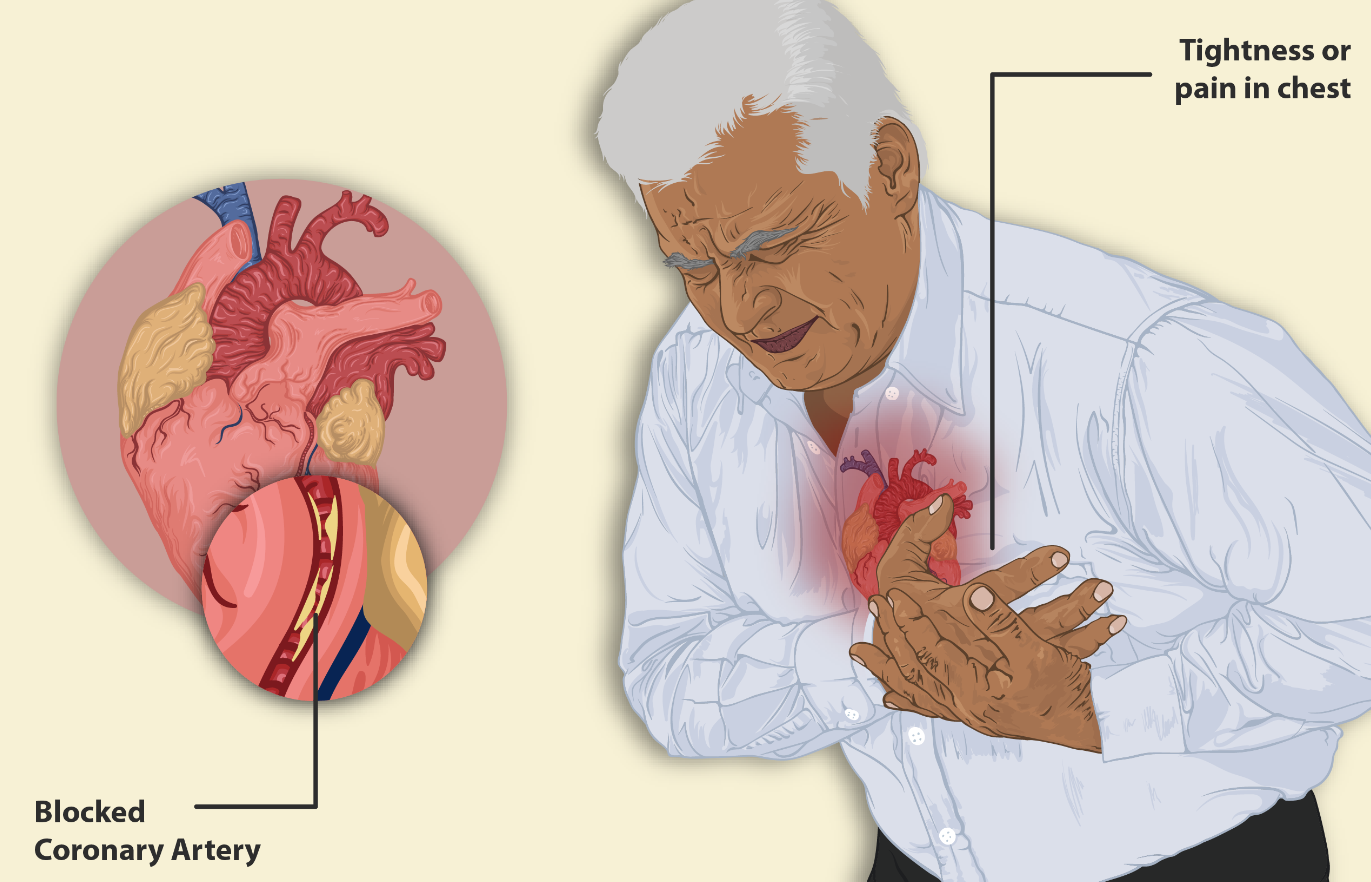Angina pectoris
Angina pectoris – commonly known as angina – is the sensation of chest pain, pressure, or squeezing, often due to ischemia of the heart muscle from obstruction or spasm of the coronary arteries. While angina pectoris can derive from anemia, cardiac arrhythmias and heart failure, its main cause is coronary artery disease (CAD), an atherosclerotic process affecting the arteries feeding the heart. The term derives from the Latin angere ("to strangle") and pectus ("chest"), and can, therefore, be translated as "a strangling feeling in the chest".

There is a weak relationship between severity of pain and degree of oxygen deprivation in the heart muscle (i.e., there can be severe pain with little or no risk of a myocardial infarction {commonly known as a heart attack}, and a heart attack can occur without pain). In some cases, angina can be quite severe, and in the early 20th century this was known to be a signal of impending death. However, given current medical therapies, the outlook has improved substantially. People with an average age of 62 years, who have moderate to severe degrees of angina (grading by classes II, III and IV) have a 5-year mortality rate of approximately 8%. Worsening ("crescendo") angina attacks, sudden-onset angina at rest, and angina lasting more than 15 minutes are symptoms of unstable angina (usually grouped with similar conditions as the acute coronary syndrome). As these may precede a heart attack, they require urgent medical attention and are, in general, treated in similar fashion to myocardial infarction.
Original post here: Angina pectoris
Comments
Post a Comment